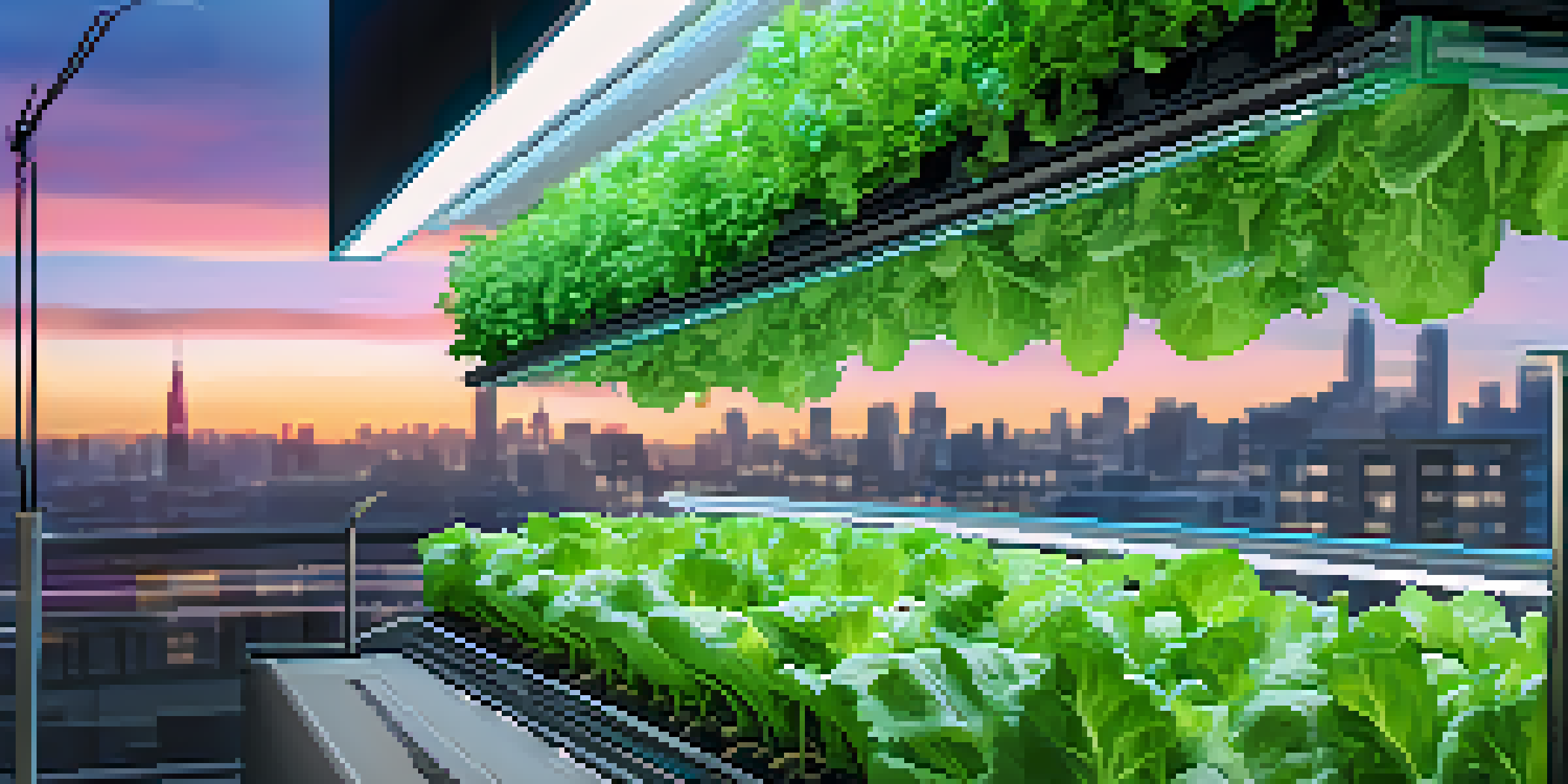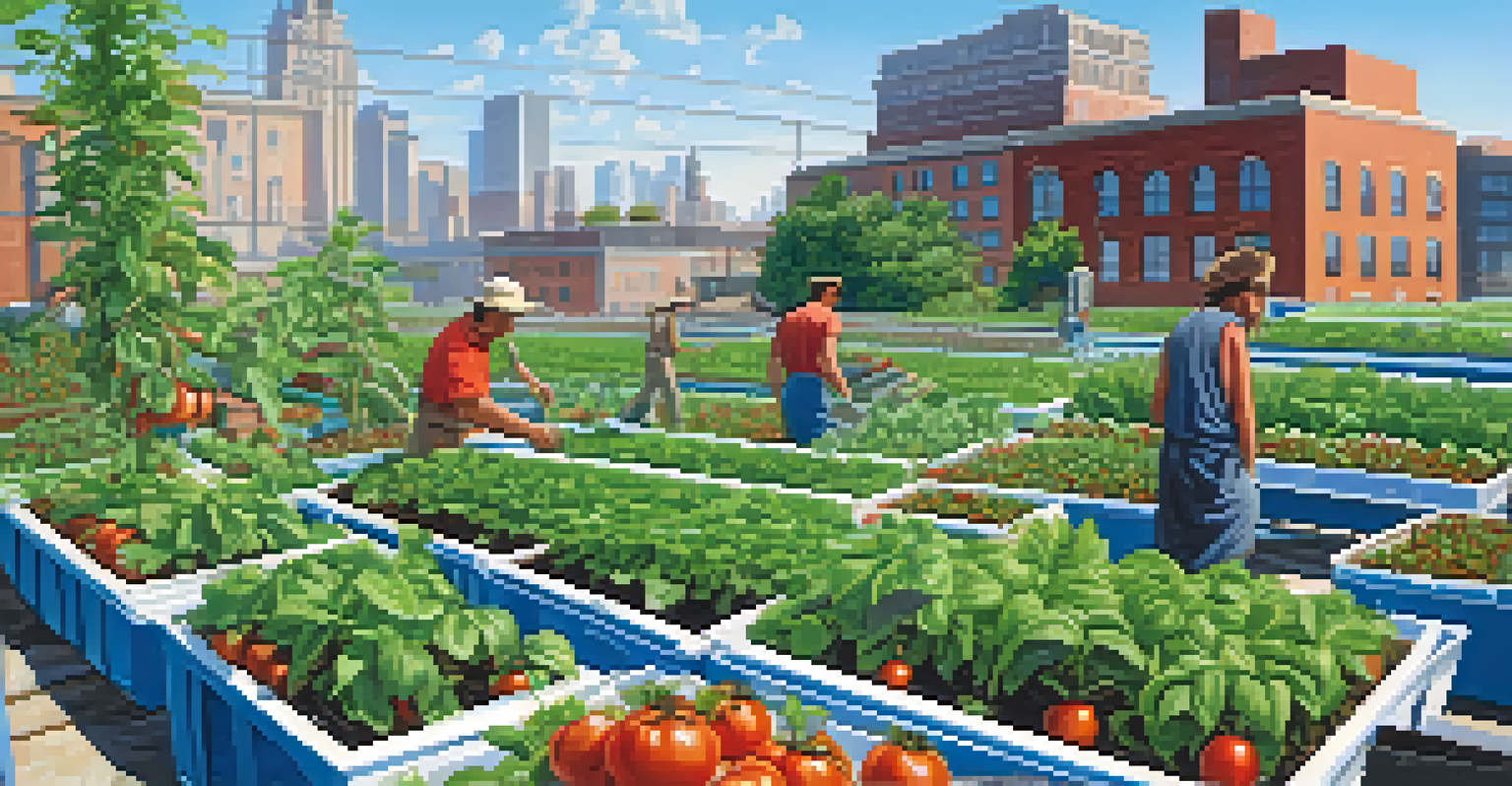Benefits of Hydroponics: Why Grow Without Soil?

What is Hydroponics and How Does It Work?
Hydroponics is a method of growing plants without soil, using nutrient-rich water instead. This innovative approach allows plants to absorb nutrients directly, leading to faster growth rates. By providing just the right amount of water and nutrients, growers can create an optimal environment for plants to thrive.
Hydroponics is the future of agriculture, allowing us to grow fresh produce in urban environments and reduce our carbon footprint.
In hydroponic systems, plants are often supported by inert mediums like clay pellets or rock wool. These mediums provide stability without competing for nutrients, allowing the roots to access everything they need. This setup not only maximizes space but also minimizes waste, making it an efficient way to cultivate crops.
Overall, hydroponics represents a shift in traditional agriculture, enabling growers to produce food in diverse environments, from urban rooftops to greenhouses. This adaptability is one of the key reasons why this method is gaining popularity among both hobbyists and commercial farmers.
Faster Growth and Higher Yields
One of the standout benefits of hydroponics is the speed at which plants grow. When grown in nutrient-rich water, plants can grow up to 50% faster than their soil-grown counterparts. This accelerated growth means that farmers can harvest crops more frequently, significantly increasing their yields over time.

Additionally, hydroponics allows for greater control over the growing environment. Factors like light, temperature, and nutrient levels can be precisely adjusted to suit the needs of specific plants. This level of control leads to healthier plants and more robust harvests, making hydroponics an attractive option for producers looking to maximize their output.
Hydroponics: Soil-Free Growth
This innovative method allows plants to thrive in nutrient-rich water, leading to faster growth and higher yields.
For example, a hydroponic strawberry grower might see their first fruit in just a few weeks, whereas traditional soil-grown strawberries can take months. This rapid turnaround can be particularly beneficial for commercial operations looking to meet high demand.
Water Efficiency: A Sustainable Approach
Hydroponics is not just about faster growth; it's also incredibly water-efficient. Traditional soil farming can use up to 90% more water than hydroponics, primarily due to evaporation and runoff. In contrast, hydroponic systems recycle water, ensuring that almost every drop is utilized by the plants.
In hydroponics, we are not just growing plants; we are cultivating a sustainable future.
This efficiency is especially crucial in regions facing water scarcity. By using closed-loop systems, hydroponics minimizes waste and conserves this precious resource. Growers can produce high-quality crops while significantly reducing their environmental impact.
For instance, a small hydroponic setup can yield the same amount of food as a large field of crops, but with a fraction of the water. This makes hydroponics a compelling solution for sustainable agriculture in the face of climate change.
Reduced Pesticide Use for Healthier Crops
Another significant advantage of hydroponics is the reduced need for pesticides. Because hydroponic systems are often grown indoors or in controlled environments, the risk of pests and diseases is minimized. This leads to healthier plants that require fewer chemical interventions.
By lowering pesticide use, growers not only contribute to a healthier environment but also produce cleaner food for consumers. Many people are increasingly concerned about the chemicals used in conventional farming, making hydroponically grown produce an appealing choice.
Water Efficiency and Sustainability
Hydroponics uses significantly less water than traditional farming, making it a sustainable solution for food production.
For example, a hydroponic lettuce grower can offer organic options that are free from harmful pesticides, attracting health-conscious shoppers. This shift toward cleaner growing practices aligns with the growing demand for sustainable and organic food products.
Space-Saving: Perfect for Urban Farming
Hydroponics shines in its ability to maximize space, making it ideal for urban farming. In cities where land is at a premium, vertical hydroponic systems allow for growing plants in stacked layers, effectively using every inch of available space. This innovation opens up new possibilities for food production right in the heart of urban areas.
Vertical farms can be set up in warehouses, rooftops, or even shipping containers, bringing fresh produce directly to consumers. This not only reduces transportation costs and emissions but also provides local communities with access to fresh, nutritious food.
For instance, a rooftop hydroponic garden can supply a restaurant with fresh herbs and vegetables daily, cutting down on food miles and supporting local economies. This urban approach to farming is not just a trend; it's a sustainable solution for food security in growing cities.
Year-Round Production: No Seasonal Limits
With hydroponics, farmers can grow crops year-round, regardless of the season. This is a game changer for those in regions with harsh winters or short growing seasons. By controlling the growing environment, hydroponic systems can produce fresh produce at any time of the year.
This continuous production cycle not only ensures a steady supply of food but also allows farmers to respond quickly to market demands. For instance, if there’s a sudden increase in demand for tomatoes during winter, a hydroponic grower can ramp up production without waiting for the next growing season.
Year-Round Crop Production
With hydroponics, farmers can grow crops continuously, independent of seasonal changes, ensuring a steady food supply.
Additionally, year-round growing helps stabilize food prices by reducing the seasonal fluctuations often seen in traditional agriculture. This consistency is beneficial for both producers and consumers, leading to a more reliable food supply.
Nutrient Control: Tailoring for Optimal Growth
In hydroponics, growers have the ability to control the nutrient composition delivered to their plants. This precise control means that they can customize nutrient solutions to meet the specific needs of different crops at various growth stages. As a result, plants receive exactly what they need to thrive, leading to healthier and more productive growth.
This tailored approach can also enhance the flavor and nutritional value of the crops. For example, adjusting the nutrient mix can result in tastier tomatoes or more vibrant greens, appealing to both consumers and chefs alike. Being able to produce highly desirable crops gives growers a competitive edge in the market.

Moreover, this nutrient control can reduce the risk of nutrient deficiencies or toxicities that can occur in traditional soil farming. By monitoring and adjusting nutrient levels, hydroponic farmers can ensure their plants remain healthy and productive.